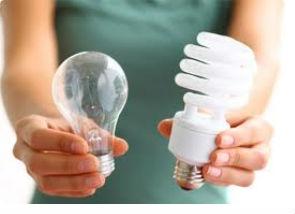 Energy efficient lighting is an excellent way to save electricity, save money, and help the environment while satisfying your home decorating itch. People often overlook the importance of lighting their homes with fixtures that reduce the number of watts spent on keeping the indoors (and outdoors) bright. A good way to get away from the old, inefficient incandescent bulbs is to look into lighting your home or office with low voltage, LED lights, or fluorescent lights.
Energy efficient lighting is an excellent way to save electricity, save money, and help the environment while satisfying your home decorating itch. People often overlook the importance of lighting their homes with fixtures that reduce the number of watts spent on keeping the indoors (and outdoors) bright. A good way to get away from the old, inefficient incandescent bulbs is to look into lighting your home or office with low voltage, LED lights, or fluorescent lights.There are drawbacks and benefits to all three of these types of light bulbs, but any of them are more efficient and longer lasting than traditional incandescent bulbs. According to The International Electrotechnical Commission, low voltage appliances function by using electricity in the range 50-1000 V AC or 120-1500 V DC. Energy Star light fixtures often use low voltage and are characterized by carrying a reasonably substantial risk of electric shock (so professional installation is encouraged), but only a minor amount of electricity actually arcs through the air. Low voltage lights (especially outdoor low voltage lighting systems) are often time consuming to install but last significantly longer than traditional incandescent bulbs so they are a good choice for outdoor lighting in a commercial setting.
Fluorescent lighting fixtures are also great energy savers when it comes to home lighting. A fluorescent light is a gas-discharge lamp that uses electricity to excite mercury vapor. The mercury atoms create short-wave ultraviolet light rays that then cause a phosphor to "fluoresce", producing visible light. A fluorescent lamp changes electrical power into useful light more efficiently than an incandescent lamp through this method. The lower energy cost of fluorescent light fixtures typically offsets the higher initial cost of the lamp itself. The fluorescent light fixture is more expensive because it is necessary to install a ballast to regulate the current through the light, but the life of a fluorescent bulb is typically much longer than a traditional bulb with a life span that is 10 to 20 times longer than a regular incandescent fixture. The compact fluorescent light bulb is also less likely to create a glare and covers a larger area with light without concentrating too much of it on one point. In this way you can light an entire room with only one or two fixtures (saving you energy through the number of light fixtures as well as the amount of electricity used to light them).
LED Lighting is another great option for going green in your home decor. There are a lot of reasons why lighting designers are turning towards LED technology when considering designing their next lighting masterpiece. Some of the most obvious advantages to LED lights over CFLs (short for "compact fluorescent lights") is that they don't contain mercury so there's no need to dispose of them in special fluorescent bulb recycling programs. Mercury can find its way into streams and rivers, and therefore fish and drinking water. Exposures to mercury can affect the human nervous system and harm the brain, heart, kidneys, lungs, and immune system. The most common way we are exposed to mercury is by eating fish or shellfish that are contaminated with mercury, but this can be prevented by careful disposal of fluorescent light bulbs through official recycling programs developed by the EPA.
With LED (short for "light emitting diode") lights, there is no risk of mercury contamination and little to no risk of electric shock and they use such little wattage that you will see a definite change for the better in your electric bill. LED lights are everywhere now, and for a good reason. They help the environment, save electricity, last longer than incandescent AND fluorescent lights, and are much more easily programmed to do a variety of tasks. In fact, energy-saving LED lighting is up to 70% more efficient and often comes with 10 to 15 year warranties from the manufacturer. You'd be surprised where you'll find LEDs--in remote controls, in DVD players, traffic lights, and even kitchen appliances. So it's no wonder that LEDs are sweeping the market in home lighting design, being featured in wall sconces, landscape lights, and even designer chandeliers.
In conclusion, there are many ways to "go green" that are simple, affordable, and easy to install. It's amazing how you can save so much energy over time by simply investing in smarter light fixtures to brighten up your home, office, store, or outdoor landscape. California has even begun phasing out incandescent bulbs by banning them from being manufactured as of January 1st, 2011. So if you're ready to jump onto the green revolution bandwagon, a great place to start is in the lighting department.
